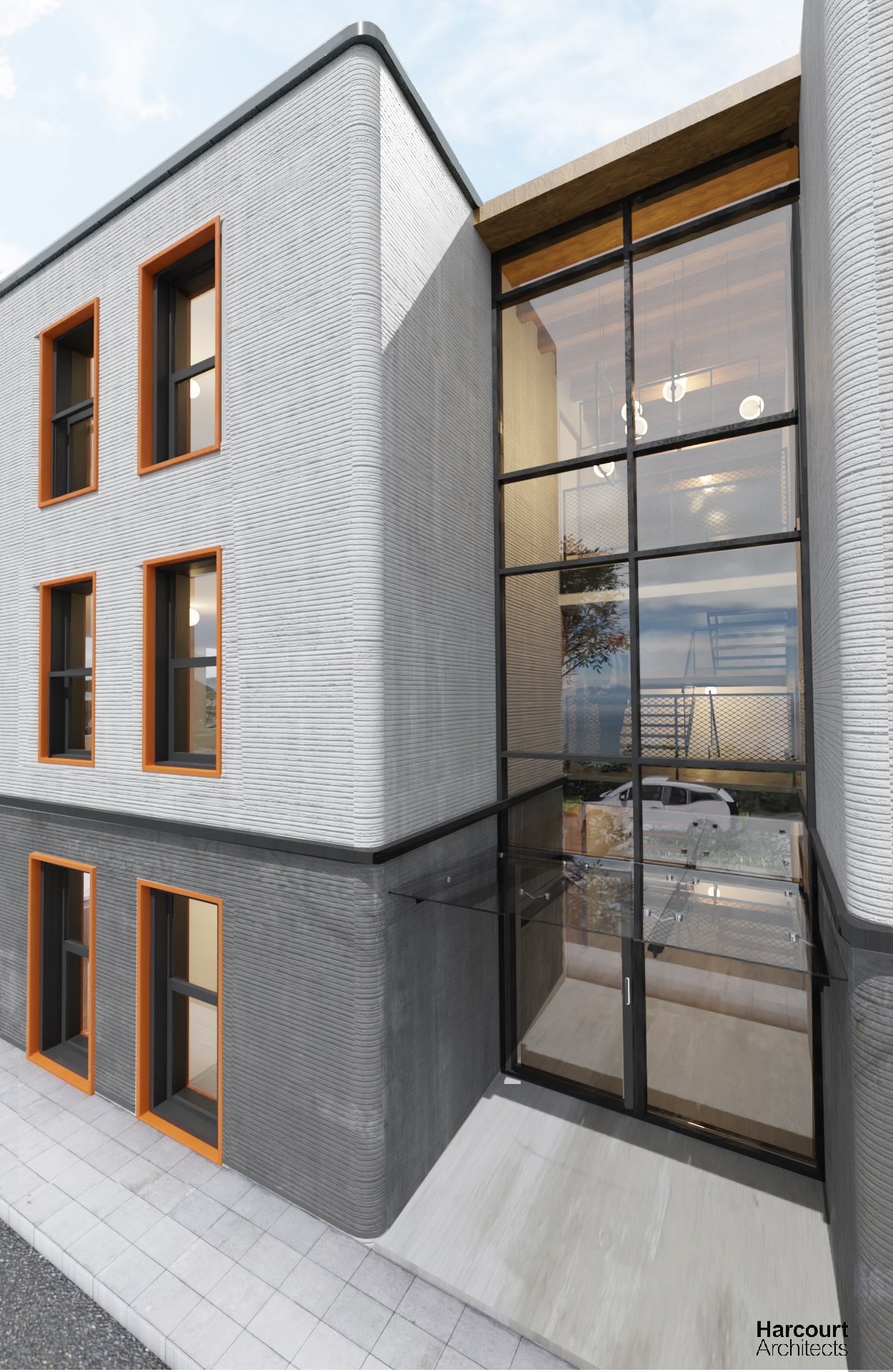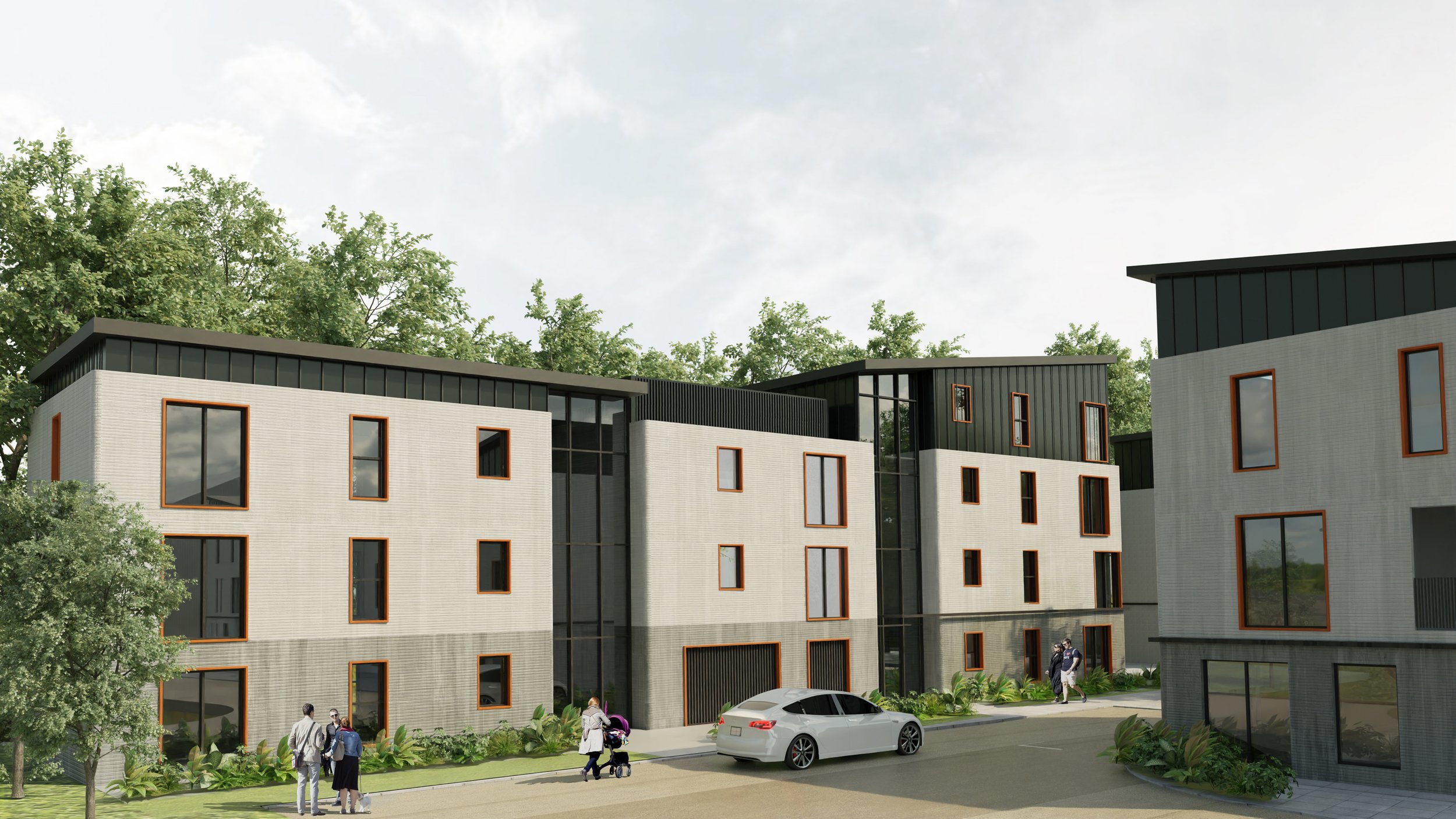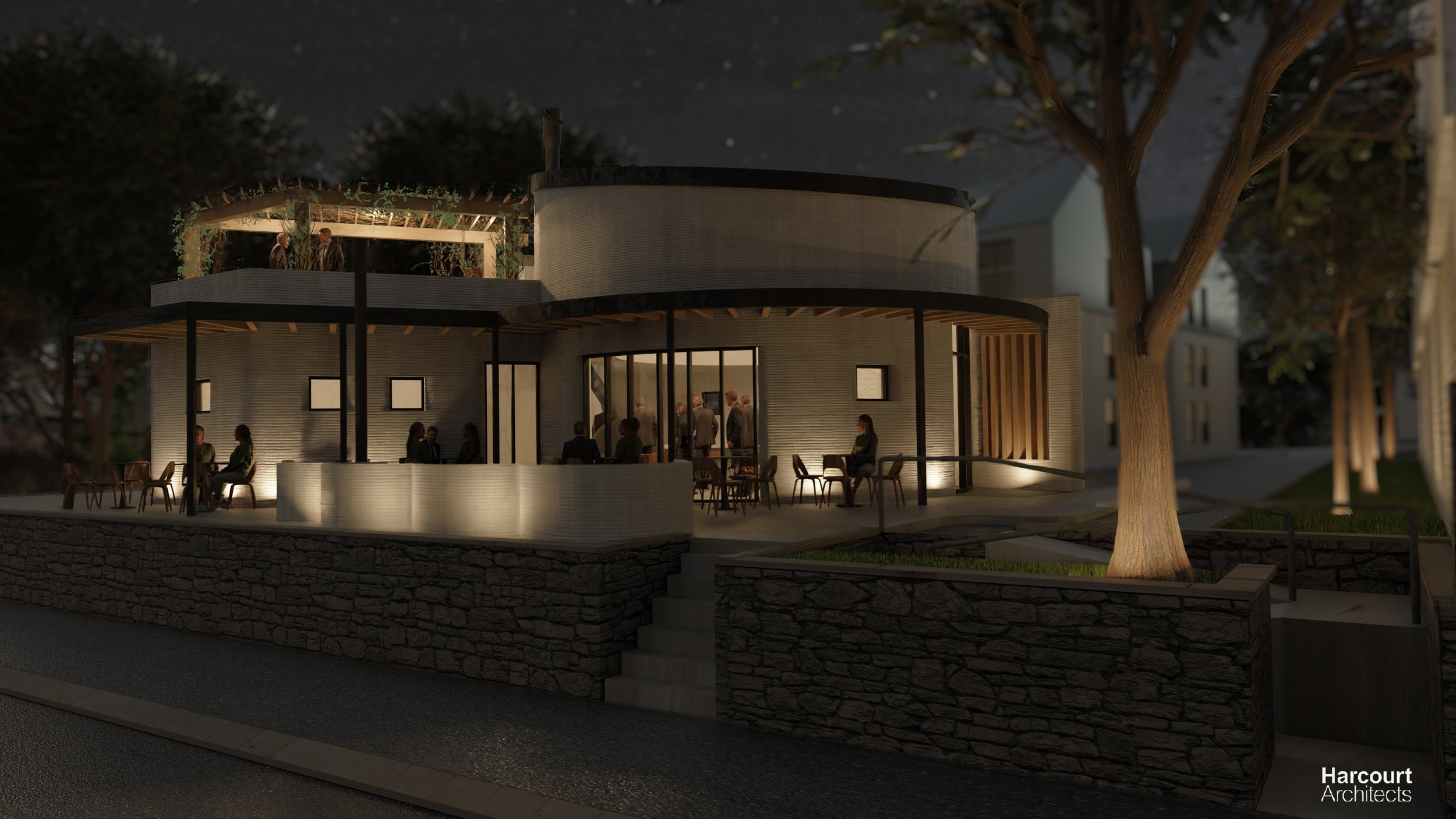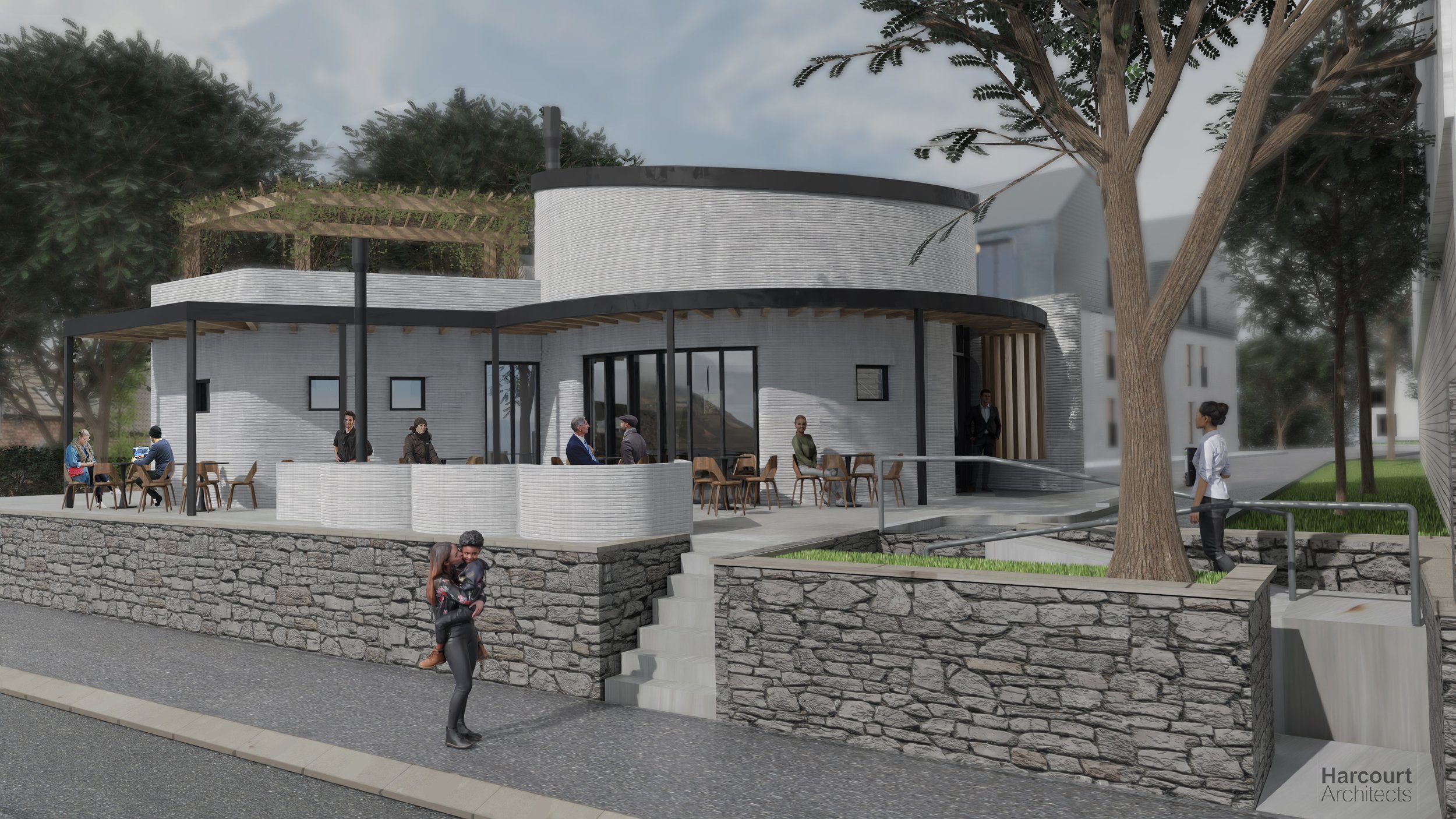First Of Its Kind Home Building Project Could Be The Answer To The Nation’s Housing Crisis
Housing Development to be built using 3D Construction Printing Technology in a UK First
The £6m scheme, to be built in Accrington, Lancashire, will house homeless veterans and low-income families in 46 eco homes that can each be ‘printed’ in weeks.
The Charter Street project is being developed by Building for Humanity, a UK-based not-for-profit housing provider.
The Building for Humanity social purpose model is redefining how affordable homes are constructed and delivered - maximising human well-being and fulfilment over profit. Based on a shared belief and the positive opportunity that 3D Construction Printing (3DCP) technology can offer in achieving greater affordability, sustainability and efficiency within the housing sector, the delivery of the project is being supported by Harcourt Technologies Ltd (HTL.tech).
Harcourt Technologies (HTL.tech) are the leading provider of 3DCP technology in the UK and Ireland. HTL’s team, comprising of architects, engineers, material scientists and construction technologists, have been quietly developing and testing the technology over the past 18 months in preparation for its commercial roll-out in both the UK and Ireland.
In addition to the development of 46 eco homes, which will be a mix of 1 and 2-bedroom apartments and 3 and 4-bedroom houses, the plans also include a community centre and training hub, as well as private and communal gardens to create a living and thriving community.
The proposed development will be the first 3DCP residential project in the UK, and when completed the largest such development in Europe. It will demonstrate the benefits that 3DCP technology can bring in terms of cost, time, quality, and sustainability, and offers an innovative solution to help tackle the housing crisis.
· Reduces labour cost ratio by 30% vs 70%
· Reduces site time by up to 50%
· Reduces comparative waste by 60%
· Projected 25% cost reduction against comparable construction that it replaces
The Charter Street development will transform an area of disused land into a community of high quality, affordable, net zero carbon eco homes, creating a 100% affordable housing development for low-income families, veterans, and people at risk of, or experiencing homelessness.
Scott Moon, Founder of Building for Humanity, said “We are delighted to be working with HTL.tech and using this technology to deliver truly affordable housing that has the potential to revolutionise affordable housing across the UK.”
“Our aim is to ensure quality housing is accessible to everyone through our unique affordable housing model. The model is simple, to create a charitable housing institute that is driven by human fulfilment and well-being rather than profit. All surplus profits go to our chosen charity partner, Homes for Humanity, meaning it goes into the community to provide housing, support and training. Ultimately this development is about so much more than housing, it is about people and giving them the opportunity to thrive.”
Justin Kinsella, CEO of HTL.tech, said “HTL’s core objective is to develop the use of 3DCP to create less wasteful and more sustainable building solutions which harness the benefits of advanced manufacturing technology to provide affordable, higher quality structures, faster and more reliably and in an environmentally beneficial manner.”
In preparation for the Charter Street Project, HTL has been working at an R&D facility at Accrington & Rossendale College. Working in collaboration with Harcourt Architects and structural engineers, Lindsay Baxter Design Ltd, they have successfully developed the application of the technology to be compliant with UK building regulations.
The support and facilities at the college have enabled the breakthrough that will greatly accelerate the uptake of this technology within the construction sector. The college will further support the technology by facilitating a 3DCP Introduction Course on 21st October, which will be the first of its kind in the UK.
Building for Humanity, HTL.tech and Harcourt Architects are pleased to have received the positive response and support from Hyndburn Council, while they work to amend the scheme’s current planning consent.
At a recent planning committee meeting Cllr Kath Pratt – Hyndburn Council’s housing, health and well-being lead, welcomed the development: “I think this is a fantastic project. This has been more than five years in development from vision to readiness for delivery.
“Building for Humanity works to help disadvantaged people access good quality housing with support and therefore support the council by accommodating homeless people and those at risk of rough sleeping. This is a really exciting housing project with the proposed development adopting a new method of construction using innovative 3D concrete printing technology currently installed at Accrington and Rossendale College. In addition, the 46 dwellings and community centre will be net zero carbon.”
The Charter Street development is scheduled to be completed within half the time of traditional construction methodologies. The Community Centre and Training Hub will showcase the free-form capabilities of the technology and serve as a meeting and training hub for residents. The digital accuracy and reliability of the printed superstructure allow other building components, such as doors, windows, floors and roofs to be prefabricated and brought to the site during the print sequence. These components are then seamlessly incorporated to deliver a weather-tight building at an unprecedented rate.
Working together, Building for Humanity and HTL.tech aim to make homeownership accessible across demographics using advanced, environmentally friendly building techniques. Our joint mission is to create a sustainable housing system that can offer individuals access to stable, environmentally efficient and secure housing whilst uplifting them through both general upskilling and training within this new technology.





